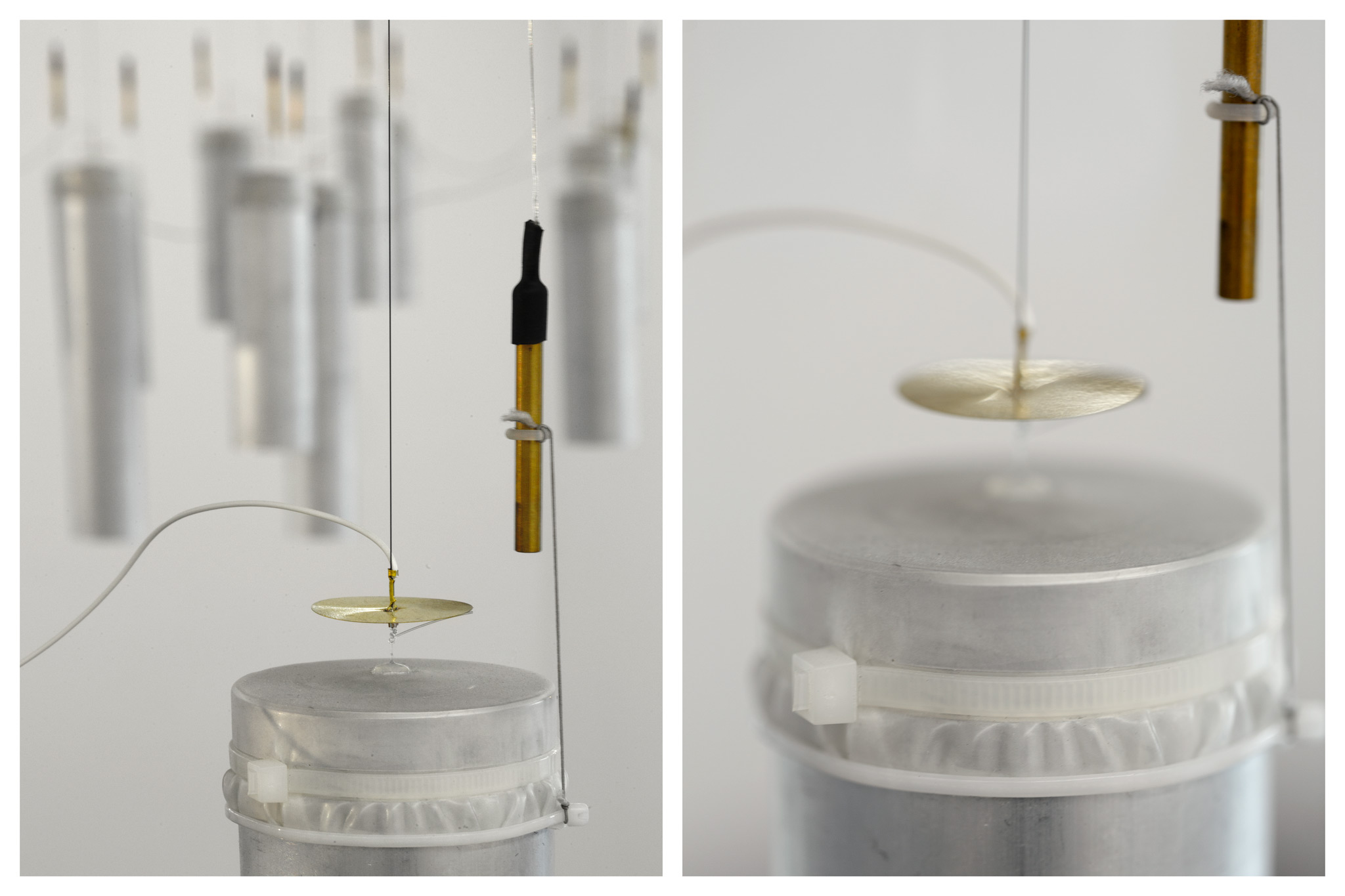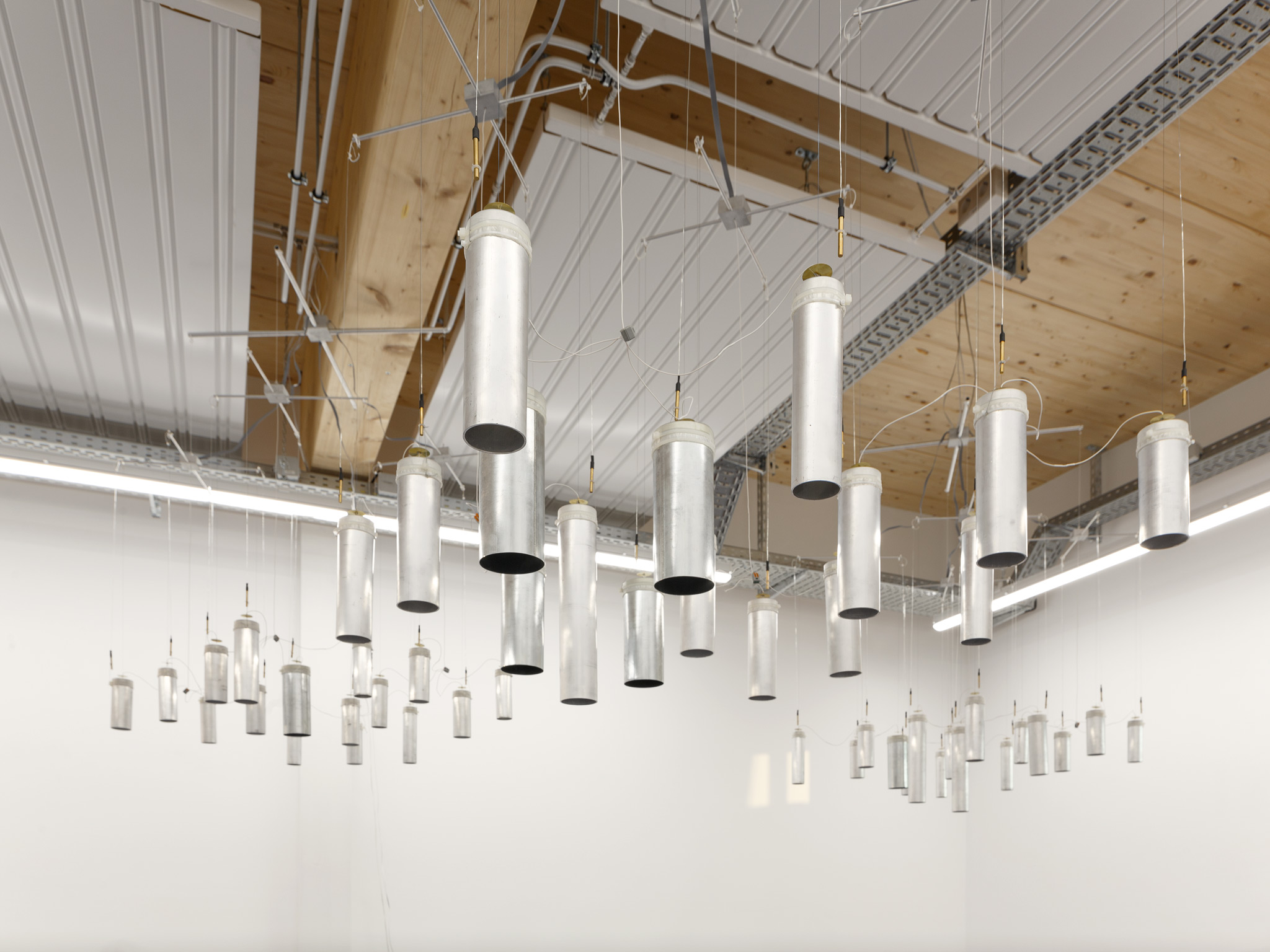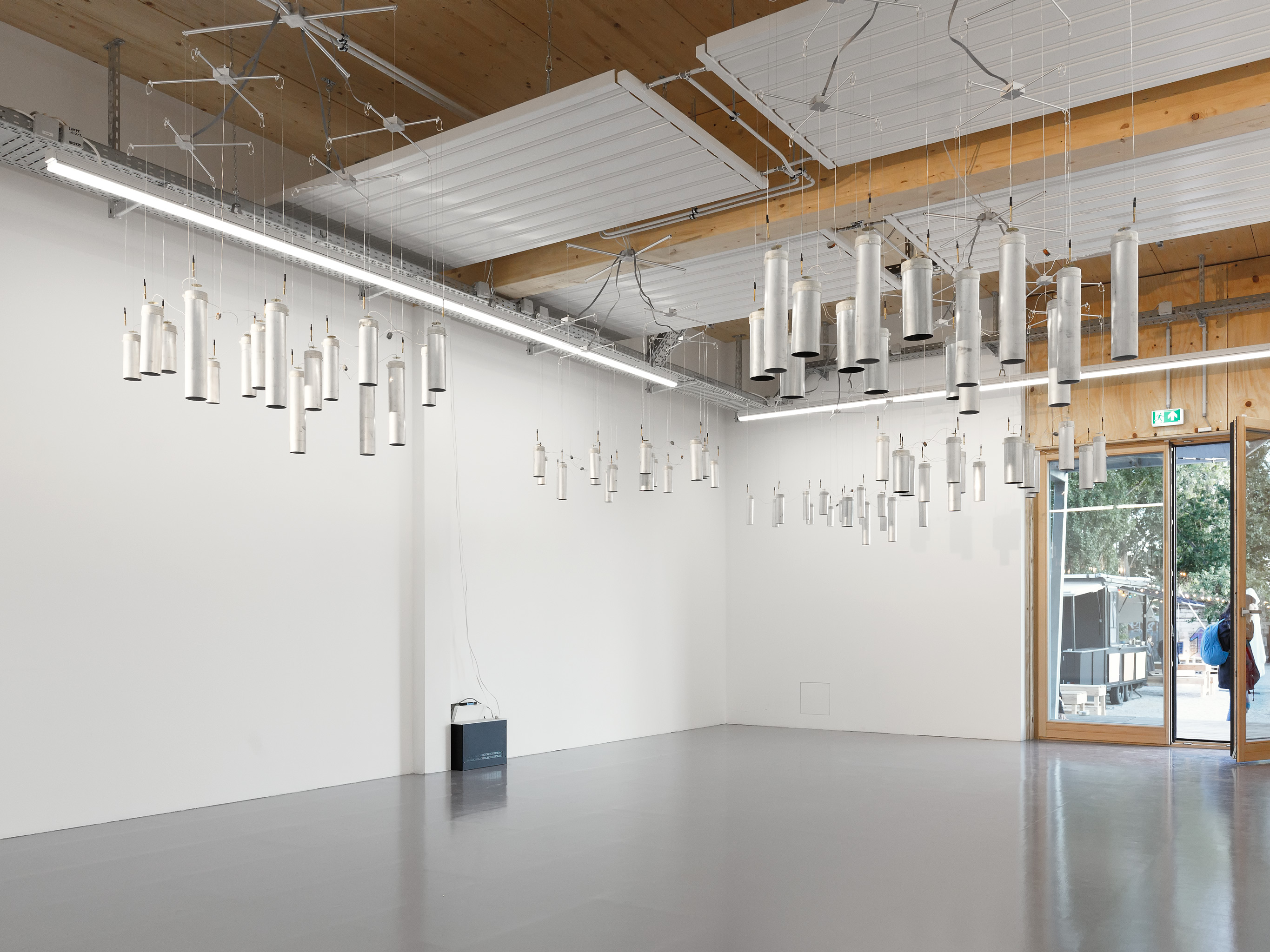Kerstin Ergenzinger
Pluvial A Sono Tactile Architecture
7.9. – 12.10.2019






With Pluvial Kerstin Ergenzinger launches the new exhibition format Be Water at B-Part Exhibition Am Gleisdreieck. After her unique work Raumtaster for Standart International #4 Spatial Clearings - a site-specific light drawing created with an overhead projector modified into a programmable drawing machine - the collaboration is now continuing.
Her sculptural spatial installation follows the associative quality of rain noise and explores the sensual and philosophical relationship between man and place by connecting the listening body with moments in which proximity and atmosphere gain previously unknown levels of meaning.
The 80-channel spatial instrument consists of self-made, digitally controlled drums that work according to the String-Drum principle and use the shape memory alloy Nitinol as instrument wire. The hanging drums balance floating in a large cloud-like mobile. Their metallic resonance tubes lift and lower at the heat-sensitive, kinetic nitinol strings, sending and knocking swelling rhythms and rushing harmonies through space. Pluvial invites to enter and follow the acoustic and tactile sounds.
Rain materializes white noise: modulated by the drop size and intensity of precipitation, acoustically and tactilely filtered by the quality of the environment the drops encounter. In analogy to the phenomenon of rain, these string drums are driven by random on-off voltage pulses, which in turn are modulated by the density and intensity of collected precipitation measurements on the world's oceans.
The result is an acoustic environment that unfolds in time and space. The physical body of the drum cloud with its different resonance frequencies and their harmonics acts like a set of bandwidth filters - defined by the different tube lengths, widths and materials, as well as by the randomly varying tensions of the drumheads. In addition, each drum is equipped with a feedback pendulum that interrupts the circuit when it is heated and fully tightened, allowing the rhythms of the individual drums to diverge further.
Thus Pluvial simulates and creates acoustically rainy conditions: be it a single precipitation or the continuous rainfalls of a certain season, a climate of variable length or a geological episode marked by heavy precipitation.
The sound installation ties in with the experience of being outside in changing weather conditions, with the openness of perception that arises when one is exposed to these conditions without protection. Through its sculptural nature and its significance, which at the same time cannot be experienced directly through form, the work develops a phenomenic character and opens up a space of experience that moves at the interface between art and science. Auditive and visual stimuli are used to evoke sensations, just as rain triggers thoughts and dream-like journeys.
︎
